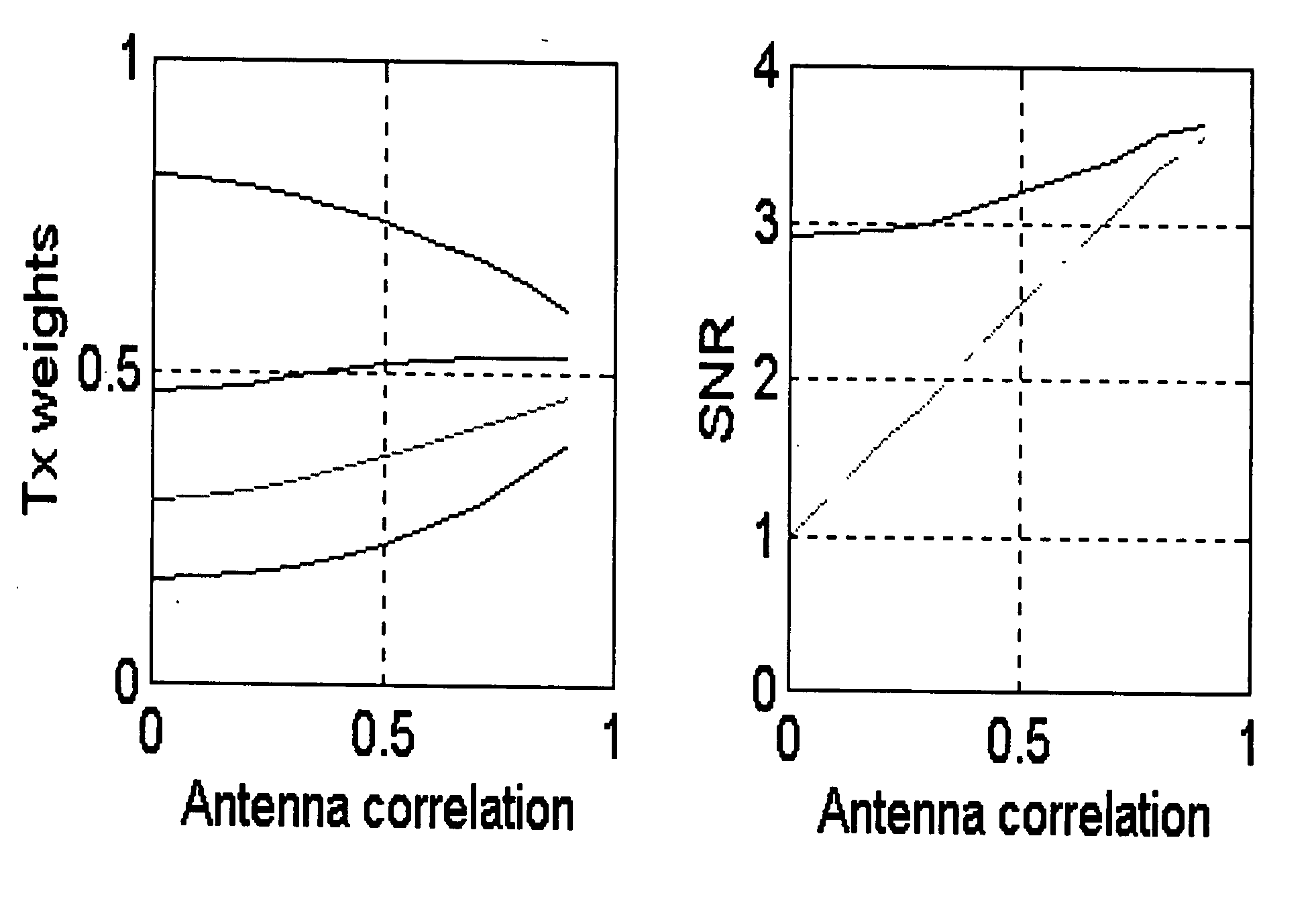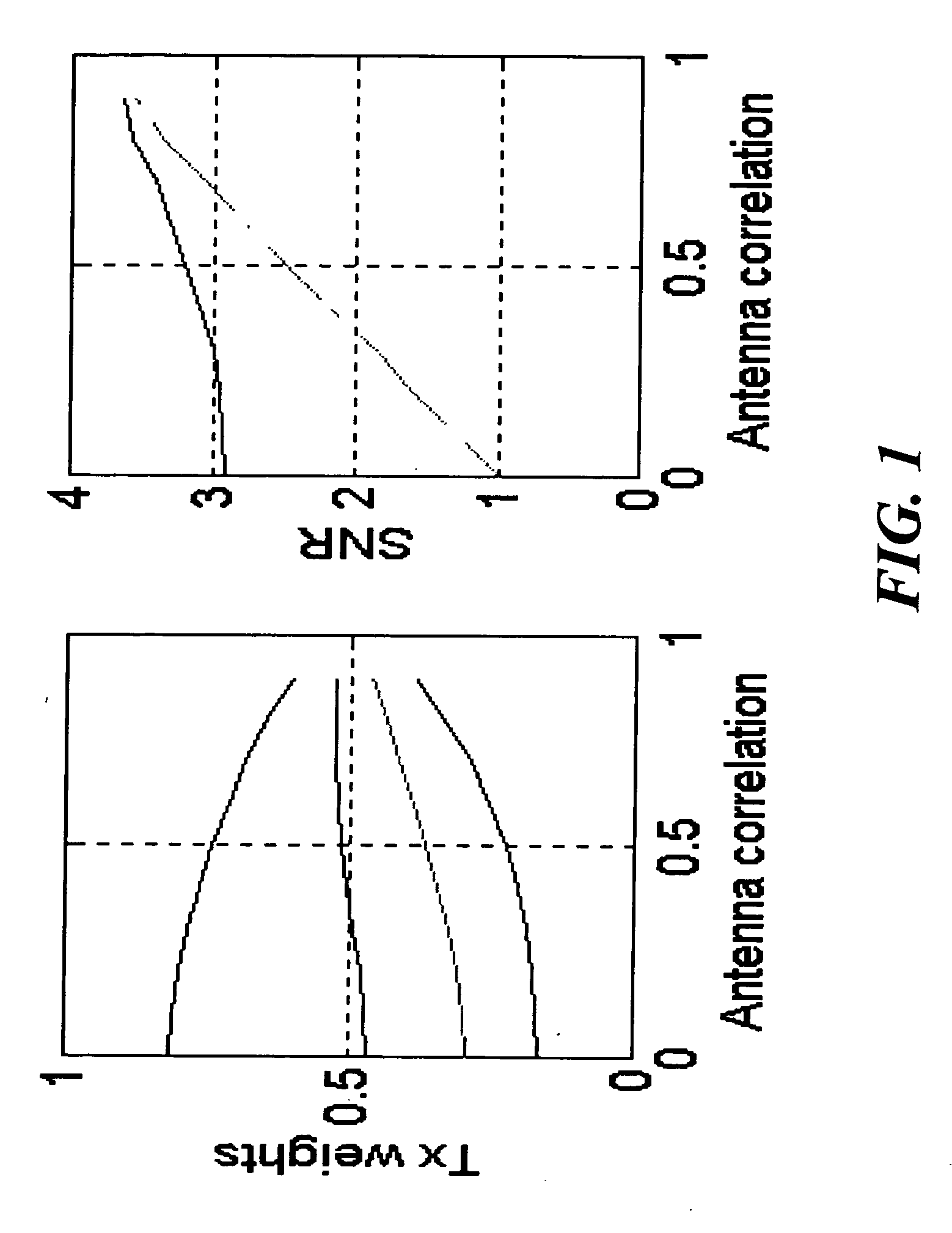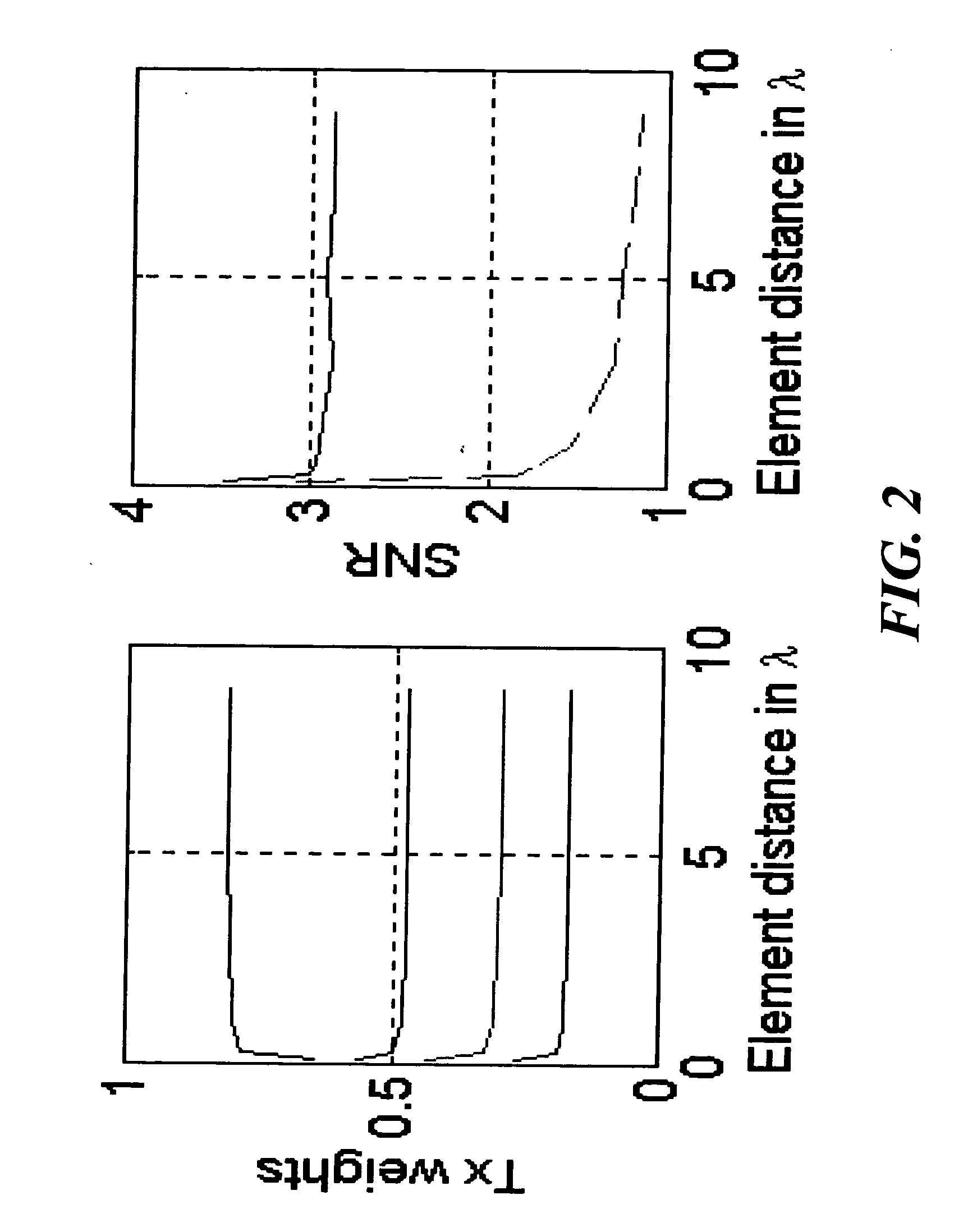Communication system and method using transmit diversity
- Summary
- Abstract
- Description
- Claims
- Application Information
AI Technical Summary
Benefits of technology
Problems solved by technology
Method used
Image
Examples
example
[0054] In the following, an example scheme (4 antennas) is described that is built up in three stages. That is, the FB word corresponding to this scheme can be of length 2, 4 or even 8 bits. Each new stage is based on the previous stage.
Description of Stages 1-3:
[0055] Stage 1. (Length of the FB word is 2 bits) This stage uses two feedback bits in order to find the best channel in terms of power among the 4 possible alternatives.
[0056] Stage 2. (Length of the FB word is 4 bits) Now we use first stage 1. That is, we first decide which antenna is best in terms of gain and define first 2 FB bits. Then we choose some antenna (known for both transmitter and receiver; for example, if antenna 1 is best, then the chosen antenna is antenna 2, etc.) and adjust the relative phases between these two antennas. Third and fourth FB bits are now defined. It should be noticed that since the transmitter knows which antenna is the best one (in terms of gains), antenna weights can be applied given ...
PUM
 Login to View More
Login to View More Abstract
Description
Claims
Application Information
 Login to View More
Login to View More - R&D
- Intellectual Property
- Life Sciences
- Materials
- Tech Scout
- Unparalleled Data Quality
- Higher Quality Content
- 60% Fewer Hallucinations
Browse by: Latest US Patents, China's latest patents, Technical Efficacy Thesaurus, Application Domain, Technology Topic, Popular Technical Reports.
© 2025 PatSnap. All rights reserved.Legal|Privacy policy|Modern Slavery Act Transparency Statement|Sitemap|About US| Contact US: help@patsnap.com



